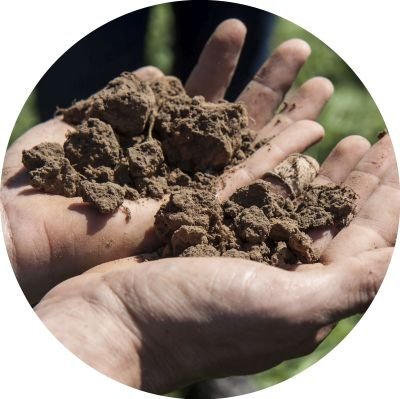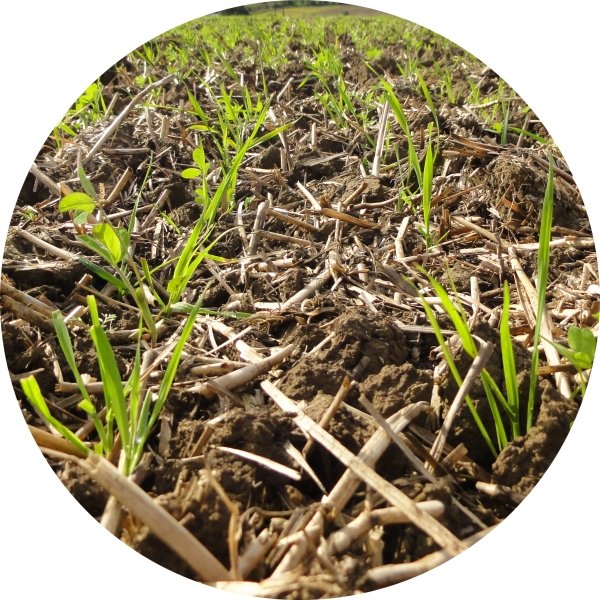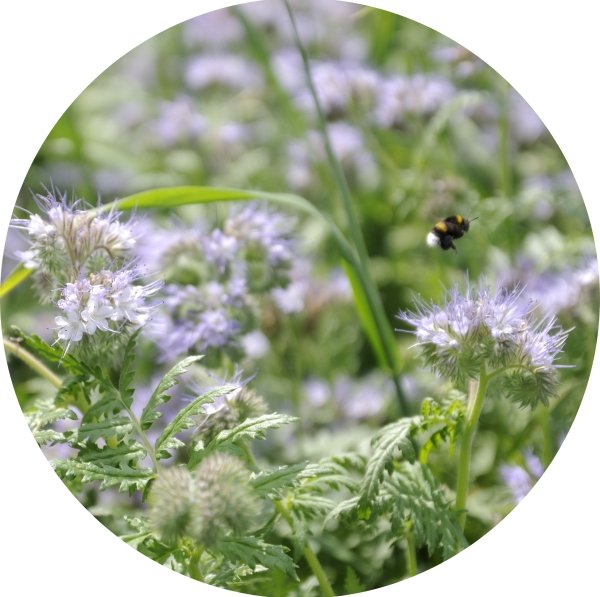IMPROVE YOUR SOIL PERFORMANCE
The soil is a living substance naturally rich in nutriments and well organized. The performance of intensive farming that we have been applying for last few years has led to soil physical and biological destructuration and degradation.
WHAT IS SOILTEQ?
SOILTEQ is a technology of sustainable farming purposed for improvement of soil performance by changing of soil work, usage of permanent cover and enlarge of crop rotation. While applying this technology we improve soil productivity and its structure, save costs and regulate the level of disease, weeds and insects.
THREE MAIN PILLARS OF SOILTEQ PHILOSOPHY:

Soil treatment:
High yields demand healthy and well-structured soil. Hence the necessity to understand how soil works and its processes. If we learn how to treat soil correctly - without interfering in structure or natural organic ingredients - we can significantly reduce the use of nitrogen fertilizers and heavy machinery.
Heavy agricultural machinery has numerous negative impacts on soil fertility, such as: disbalancing air and water regime, worsening root systems, and destruction of biological activity. These impacts may damage soil absorption capacity and increase the risk of local flooding.
- Understanding soil processes that determine structure
- Adjustment/improvement of management practices using current machinery

Permanent soil cover:
Maintenance of permanent soil cover is essential for soil’s fertility and good condition for numerous reasons, foremost of which are protection against harmful effects of torrential rainfall and sunlight, prevention of soil erosion, desiccation and water runoff.
Green soil cover considerably reduces the impact of raindrops on soil surface (an impact that leads to the destruction of soil aggregates and the subsequent forming of soil crust that seals the surface). Permanent soil cover is also important for infiltration and soil moisture retention, which makes periods of water stress less severe and shorter, giving plants enhanced accessibility to nutrients. Permanent soil cover also increases the content and creation of humus in soil, and provides micro- and macro-organisms with steady intake of nutrients.
- Soil protection against erosion, drying out and compaction thanks to intercropping and undersowing crops in crop rotations
- Increased content of organic matter in soil and improved soil structure

Crop rotation:
In compliance with recommended sowing procedures, we can get nutrients hidden deep in the soil, and help marketable crops improve vegetation.
Nutrients washed out into deeper soil layers no longer available for crops may be due to the "rotationally" recycled cover crops and undersowing crops. In this way, crop rotations work as a biological pump. Crop diversity leads to rich soil flora and fauna, roots of which secrete various organic substances that attract a wide range of bacteria and fungi that play an important role in transforming such substances into plant-receiving nutrients. Crop rotation also has an important phytosanitary function in preventing the transmission of crop-specific pests and diseases from one plant to another. The more variable the crop rotations, the better the distribution of water and nutrients in the soil profile - and the more humus creation and content in the soil.
- Extension of crop rotation practices promotes crop diversity
- Improved weed and disease control
